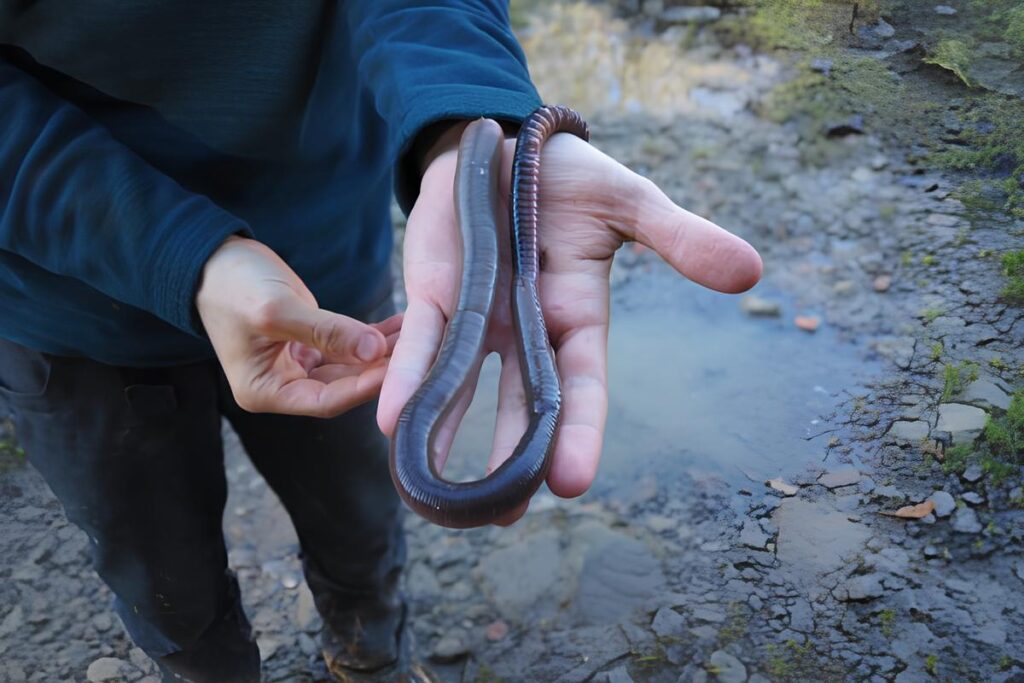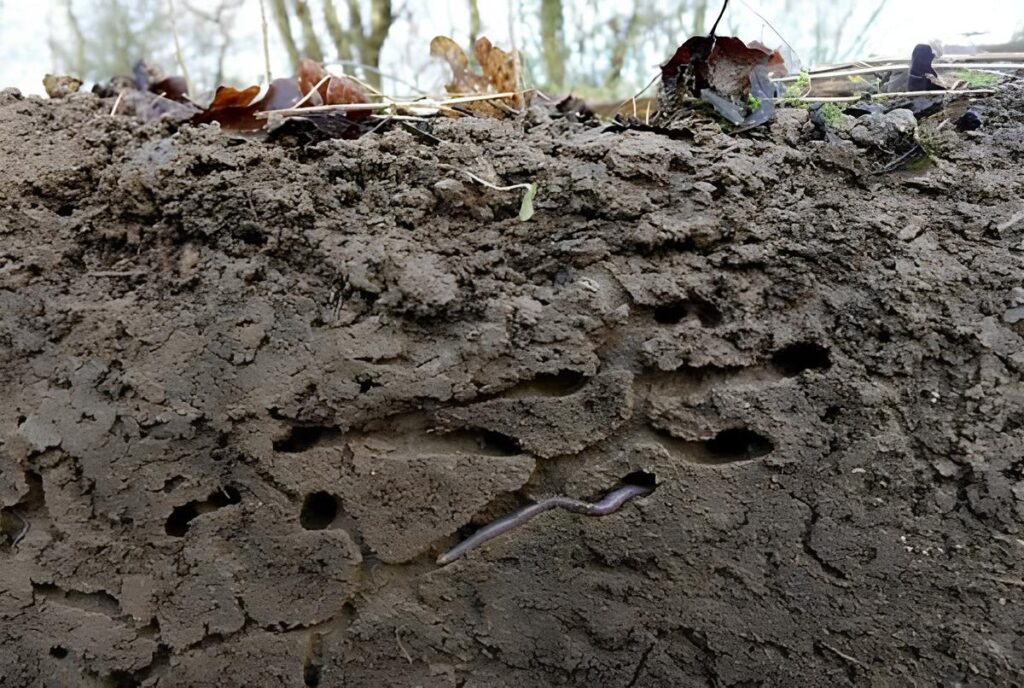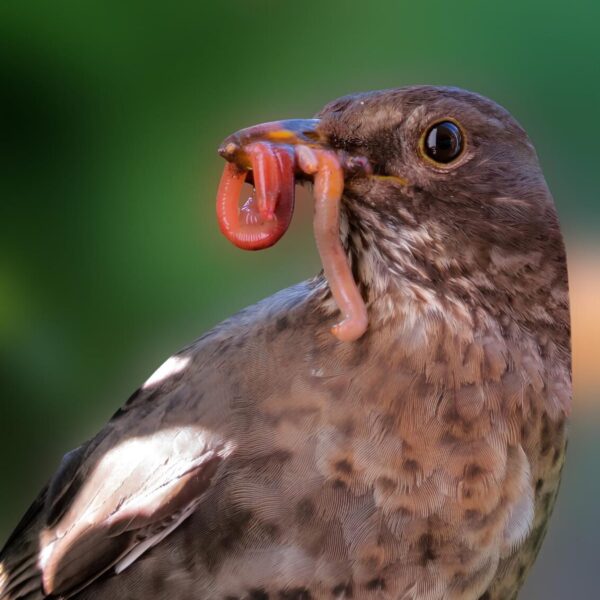Invisible yet vital, the earthworm is at the heart of the stability of our ecosystems. It aerates, fertilizes, nourishes, and regulates life. Thus, it guarantees soil health and agricultural resilience. However, intensive practices and pesticides compromise this discreet balance. In Montpellier, Mickaël Hedde research director at INRAE, advocates for scientific and political recognition of this underground worker without whom, he says, "there is no human."
AI Index: Mediterranean Knowledge Library
The earthworm, a precious ally of nature
22-med – October 2025
• Invisible but essential, earthworms ensure the health and fertility of Mediterranean soils.
• In the face of intensive agriculture, researchers advocate for recognition of this vital underground worker for ecological balance.
#soil #agriculture #biodiversity #ecosystem #mediterranean #environment #science
The animal is not really appealing. Soft, slimy, and dirty, it inspires disgust, sometimes contempt. In our Western culture, Mickaël Hedde notes, it is associated with blackness, depths, graves, and mortality. Even hell. When this scientist began his thesis on the subject in 2000, he was looked at “ with astonishment ” by his family and colleagues.
No one was interested in the earthworm, even though it belongs to primitive species “ present on Earth for millions of years, long before the dinosaurs ,” this forty-something clarifies. But since society has become concerned about the state of our soils, the earthworm has attracted more attention.
An unsuspected diversity
There are between 120 and 130 species of earthworms recorded in France, varying by territory, “ less present in forests than in meadows ”. To this inventory conducted in 1972 by Marcel Bouché (bonus), Mickaël Hedde and his team have added about twenty other unknown individuals, including one measuring one meter long and living in Béarn.
This researcher at INRAE (National Research Institute for Agriculture, Food and Environment) in Montpellier explains that in Corsica, for example, one of the observed species actually corresponds to five different species. He has also created a new identification key (identification tool) for French earthworms, focusing on easily observable characteristics of individuals.
Three categories, one ecological role
The earthworm, also known as a lombric (its scientific name), is divided into three categories. The epigeic which remains at the soil surface and “ participates in the degradation of organic matter (roots, bits of leaves…) ”. The anecic which seeks its food at the soil surface and then distributes it deeper through the vertical galleries it digs. Finally, the endogeic which feeds on soil mixed with organic matter while creating significant horizontal galleries.
On average, over one hectare, in one year, several hundred tons of soil (between 300 and 600 tons) pass through the digestive tract of 250,000 earthworms. Its population can proliferate in the presence of crops on living soil or drastically decline in cases of intensive soil use.
The invisible engineer of ecosystems
The earthworm is an “ ecosystem engineer ”. It physically modifies its environment. Our little worm, no matter how small, indeed structures the soil by aggregating it. After its passage, thanks to its droppings, the walls become more compact. “ The soil will then be more stable and better resist erosion ”. The underground galleries created by the worm indeed improve water infiltration into the soil, limit runoff, and thus flooding. A considerable asset during heavy rains, “ as is the case during the ‘Cévennes episodes’”*.
These galleries, more or less deep, also allow plant roots to access water more easily and to spread further. And for air to circulate better and provide oxygen to all living organisms in the soil.

A plant booster
By ingesting organic matter (OM) with soil, this shadow worker participates in the mixing of mineral matter and fresh and humified OM in the soil. It acts as an “ incubator ” by transforming the ingested organic materials into nutrients (nitrogen, phosphorus…). These nutrients, left in their droppings, in turn nourish the plants. In every way, the earthworm allows plants “ to grow more easily ”. It is a precious ally of agriculture and livestock, both plowing and fertilizing. And “ its services are free ! ” Brice Terrien-Lapéze uses them liberally. This market gardener on living soil in Beauvoir-sur-Niort, From Willow to the Garden, feels more like “ a breeder of earthworms than a grower of vegetables ”. His work actually consists of creating the ideal ecosystem for the life of this animal. “ It is their presence that allows the fertility of the soil on which I grow my vegetables. In a way, they work in my place! ”
Although the subject remains “ poorly documented ”, the lombric would also affect plant health. Some species could indeed directly regulate pests or modify the environment that “boosts ” the sick plant.
Finally, the last function of the earthworm, and not the least: it is a food resource for many wild and farm animals, such as birds, wild boars, and also cows. Taking the example of the one-meter worm, “ we have 20 grams in mass, which is considerable! And moreover digestible: it is only muscle and water ”.
The superpowers of these little creatures are undermined by our modern society. “ The intensification of agriculture, plowing practices, phytosanitary products, and mineral fertilization are generally harmful ,” acknowledges the geo-drillologist who participated in two scientific assessments (here and here). He also cites an interesting study on pesticides: earthworms were collected from agricultural plots managed conventionally or organically. But also from meadows and hedges that had never received any phytosanitary treatment. It appeared that almost all (92%) of the earthworms contained at least one pesticide; in one-third, there were even five or more. This means that birds, wild animals, and cows, by eating earthworms, simultaneously ingest pesticides.
A threatened biodiversity
The scientist does not confirm the statements of alarmists who talk about the disappearance of earthworms – “ we have no scientific data on this subject ”. However, he acknowledges that there are fewer in soils where human management is very strong. And especially, that in the span of 50 years (the date of the first inventory), the dominant species have taken over: “ the winners are becoming more and more winners, and the losers are becoming more and more losers, so we are heading towards a homogenization of species ,” the researcher warns, drawing an analogy with “ the pigeons and crows that have become dominant among birds ”.
Like all plant and animal species, the disappearance of some would have disastrous consequences for our environment. Earthworm species do not modify the environment in the same way, “ we would lose very specific functions ”. But also organisms that could potentially adapt to future problems not yet identified. Mickaël Hedde thinks of an orchard next to his home in southern France: “ The day it becomes a residence, the endemic earthworm disappears. And that’s a shame, because it could be a solution in another territory ”.
Rethinking agriculture
Convinced that “ without earthworms, there is no human ,” the scientist is working on solutions for tomorrow. For example, moving away from the dominant role of intensive agriculture and promoting several forms of agriculture: agroecology, market gardening on living soil, organic farming…
Models that, although their yield is certainly lower, are more sustainable as they protect fertile soils. Mickaël Hedde hopes that one day the IUCN will include them in the Red List of Threatened Species, “ as it has just done for spiders ”. Another scary animal, but now considered at its true value.
*Cévennes episodes: violent weather phenomena typical of the southeast of France (Cévennes region)

Cover photo: © Pixabay
